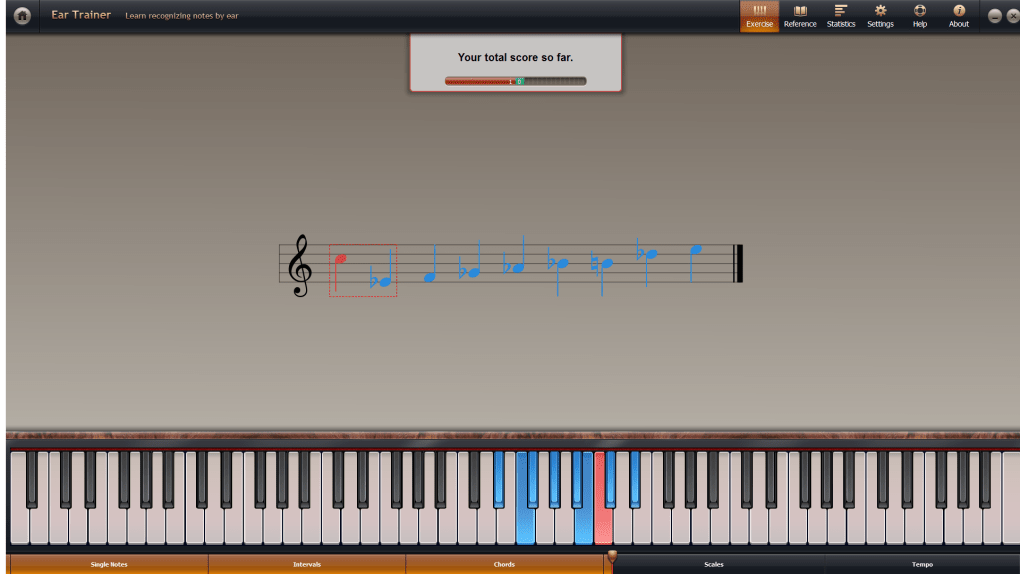Quickly find the key and BPM of your entire library to find compatible tracks for your mashups. Search Our Database. Instantly search thousands of tracks to find the perfect match for your production. Edit Track Data. Add tracks, submit edits, and rate.
- Key & BPM Database and Music Finder A resource to help DJs, producers, musicians, and music enthusiasts find key and BPM info, as well as much more for 40M+ songs, and to discover tracks for harmonic mixing and any other purpose imaginable.
- MixMeister BPM Analyzer helps you quickly find out BPM (beats per minute) of any song. The program's main advantages are accuracy and ease of use. It can calculate very precisely the BMP of any song and the user friendly interface makes operating this tool a very simple job.
Being able to recognise the key of a song is an extremely valuable musical skill which can take some time to develop. To give you a quick crash course, every song is made up of a variety of notes, but the key, is a group of seven notes or chords that harmonically work really well together. Here’s the C major scale for example, for which the key is C:
C-D-E-F-G-A-B-C
And here is the C major chord scale:

CEG. DFA. EGB. FAC. GBD. ACE. BDF.
All you need to know at this stage is that playing combinations of these notes or chords together will always sound good together. Playing notes that are outside of these notes for the key of C, won’t.
The science
When we hear different notes being played from an instrument, sound waves hit our eardrums at different frequencies – measured in Hertz (Hz). Some sound waves when played together sound great and literally music to our ears whereas some, can sound a little strange or even out of tune.

When to adjust key and tempo
Samples often need to be slowed down, or sped up to match the tempo of the track – if you imagine a sound wave being stretched or squashed to fit the BPM of your track, you can start to understand what this also does to the sound.
Bpm And Key Analyzer Mac Free
Vocalists experience having to sing above or below their natural vocal range when covering songs originally sung by members of the opposite sex. In a live setting, the band will accommodate this by changing the key of the song. When working with samples which have already been recorded, we need to rely on technology to do this work for us.
Manipulating key and tempo on BandLab
For a MIDI track, changing the key is as simple as transposing it up or down a few semitones and your DAW has intervals to help you get this exact.

Bpm And Key Analyzer Machine
For an audio track, changing the key usually requires a tempo shift and this can often be laborious, time-consuming and can often result in samples not being quite in tune or in the key you need it to be. The great news is, BandLab’s got your back. We’ve integrated a piece of technology called AudioStretch meaning you can change the key of an audio track or sample without changing tempo, or vice versa. There will be no loss of audio quality either!
To adjust the key or tempo of a track, right click on the track and mouse over “AudioStretch”. Choose + or – 1 semitone to adjust the pitch, or + or – 10% speed to adjust the tempo.
You can even adjust the overall key or tempo of the entire song, so you don’t have one track that is out.
If you’re working with pre-recorded samples, or recording a live instrument, make sure you set the key of the track once you’ve recorded it. If you recorded a guitar in the key of A maj for example, input the key on the top of the Mix Editor. You can also right-click on the track and select “Analyze Region” to determine the BPM of your track. Best practice is to input the key and the tempo of your track when you start a project, and any future adjustments will be based on that.
Being able to make music without the boundaries of a fixed key or tempo allows you to be as creative as you like. So get creating here.
Please check the system requirements before installing your free two week trial copy of beaTunes.
This trial version becomes the full version simply by entering a license key. In other words: There is no separate download for the full version.
| Date | File | Size | Platform |
|---|---|---|---|
| 16.5.2021 | beaTunes-5-2-22.dmg | 307.959.245bytes | macOS |
| 16.5.2021 | beaTunes-5-2-22-x64.exe | 315.890.672bytes | 64-Bit Windows |
| 16.5.2021 | beaTunes-5-2-22-i586.exe | 314.664.992bytes | 32-Bit Windows |
Questions? Check out the FAQ and the support forum.
Looking for older beaTunes versions? Here they are.
System Requirements
- 64-Bit Intel processor (4 or more cores recommended)
- 4GB RAM
- macOS 10.11.6, 10.12.5, 10.13.6, 10.14.6, 10.15.7-or- Windows 7, 8, 8.1, 10 [1] (64-bit version recommended)
- beaTunes makes use of several web services and therefore works better with a fast, always-on Internet connection
[1] If you are using Windows 10 N/KN, please install the Media Feature Pack available from Microsoft (make sure you install the version that's made for your version of Windows).